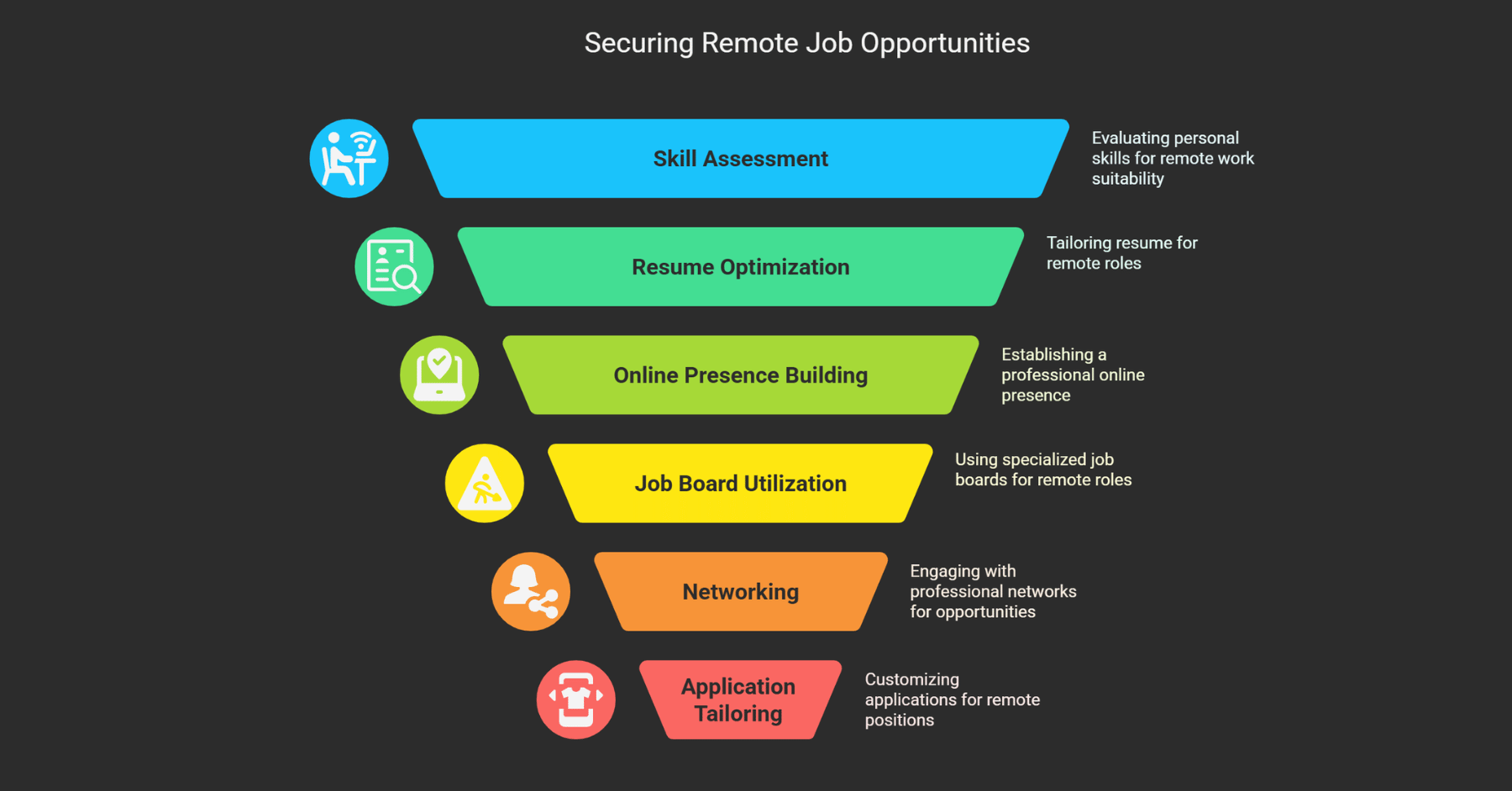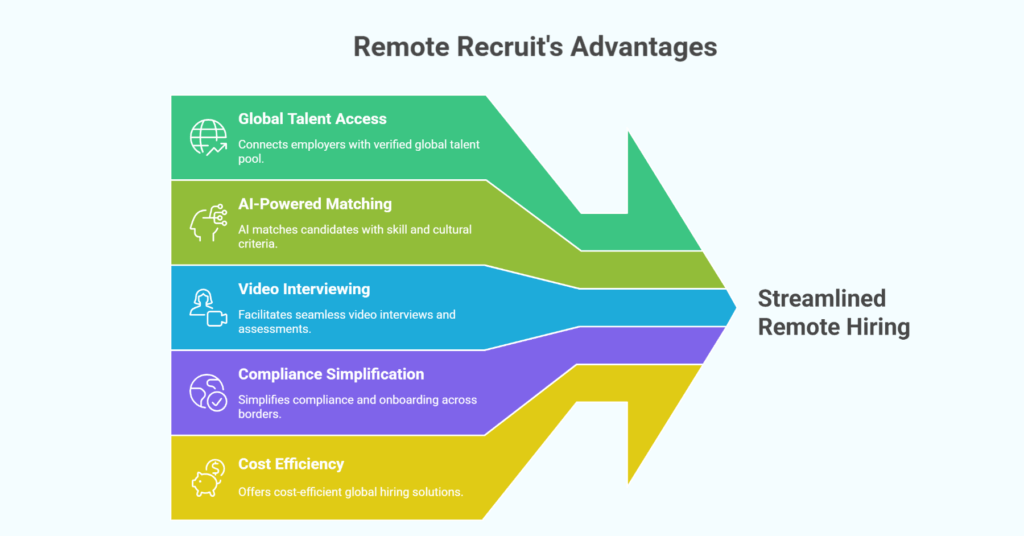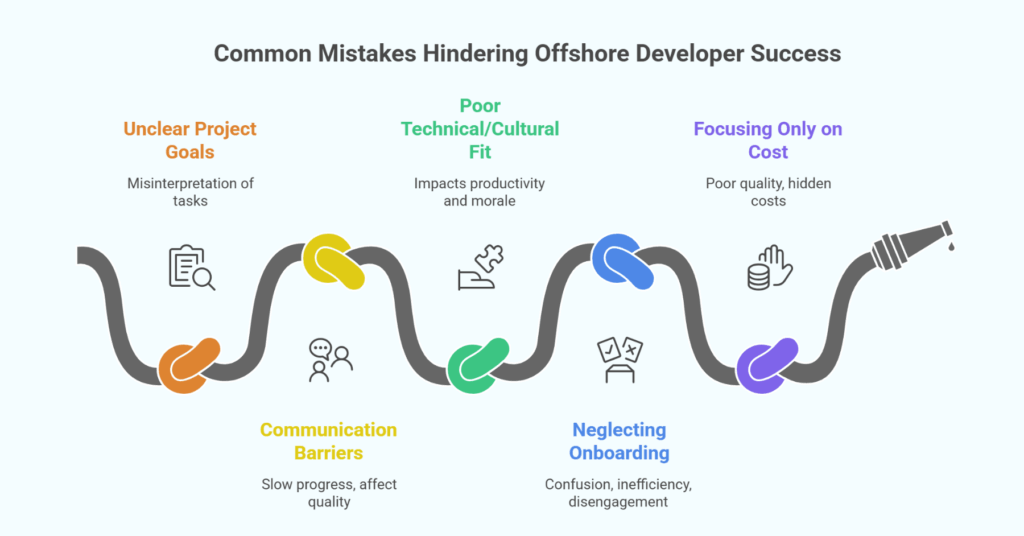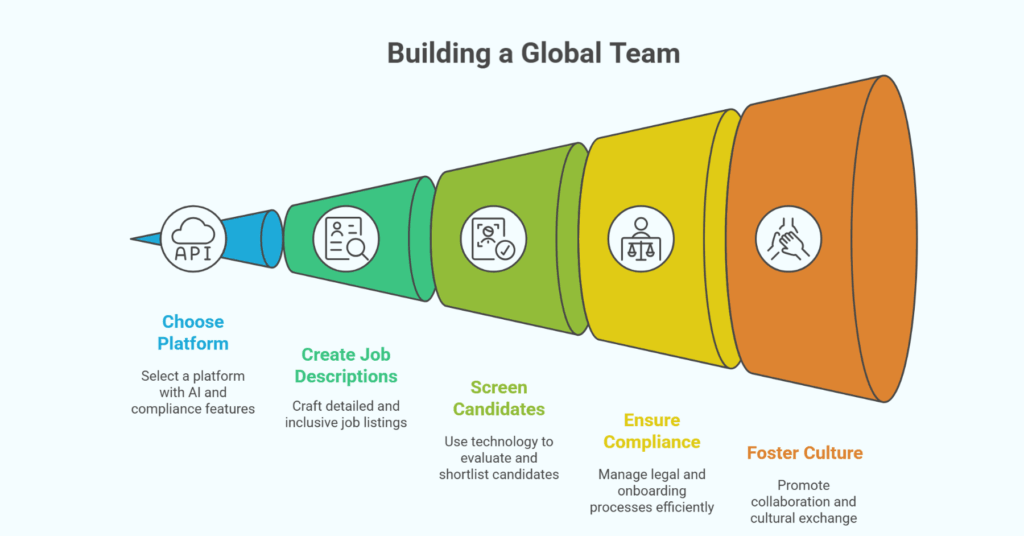“Finding Remote Jobs opens doors to global opportunities, giving you the flexibility, autonomy, and work-life balance you’ve been seeking.”
The remote work revolution has reshaped the job market, making flexibility and location-independence the new norm. By 2025, it’s estimated that over 35% of the global workforce will engage in remote work at least part of the time, driven by advances in collaboration technology and shifting employee expectations. Yet many job seekers struggle to navigate this evolving landscape and find high-quality remote positions. From tailoring your resume for virtual roles to mastering video interviews, a structured approach is essential. This guide equips you with the exact steps—assessing your skills, building an online presence, leveraging top remote job boards, and refining your application strategy—to turn “finding remote jobs” from a challenge into an opportunity. Whether you’re seeking work-life balance, time savings, or global career growth, these tactics will position you for success in the competitive remote job marketplace.
Preparation Phase
Remote job success starts with preparing yourself for the unique demands of virtual roles.
-
Assessing your skills and suitability for remote work
Conduct an honest inventory of your technical and soft skills to ensure you can excel independently. Evaluate strengths such as communication, self-discipline, and time management—critical in a remote setting—and identify any areas for improvement. Use online self-assessments or feedback from colleagues to gauge readiness. Research the tools and platforms commonly used in your field to ensure you can hit the ground running. This deliberate self-evaluation builds confidence and highlights your suitability to prospective remote employers. -
Optimizing your resume and LinkedIn profile for remote roles
Craft your resume and LinkedIn summary to emphasize remote-relevant skills like virtual collaboration, digital tool proficiency, and prior telecommuting experience. Use clear, quantifiable achievements—such as “Managed a remote team of five across three time zones, increasing project delivery speed by 25%”—to demonstrate impact. Incorporate remote-friendly keywords (e.g., “remote,” “virtual,” “asynchronous collaboration”) to improve visibility in applicant tracking systems. Add media attachments or portfolio links to showcase work samples. A polished, targeted profile positions you as a standout remote candidate. -
Building a strong online presence
Cultivate credibility by sharing industry insights, project updates, or remote-work tips on LinkedIn, Twitter, or relevant forums. Contribute to discussions in remote-work groups and publish short articles or posts that demonstrate expertise and thought leadership. Ensure your personal website or portfolio is up to date, mobile-optimized, and clearly displays your services and achievements. Engage with potential employers and peers by commenting thoughtfully on their content. This active digital footprint builds trust and makes you more discoverable to recruiters seeking remote talent.
The Search Process
Once prepared, focus on strategic avenues to discover and connect with remote opportunities.
-
Identifying reputable remote job boards
Beyond general listings, prioritize specialized platforms that curate vetted remote roles, such as Remote Recruit, where over 5,000 new positions are posted monthly. These niche boards often feature higher-quality, flexible gigs compared to broad job sites. Set up targeted alerts for roles matching your skill set to stay ahead of the competition. Explore filters for job type, industry, and time commitment to narrow your search effectively. Consistent engagement on these platforms increases your chance of landing relevant interviews. -
Leveraging professional networks and communities
Tap into remote-work-focused Slack channels, LinkedIn groups, and alumni networks to learn about unadvertised positions and receive referrals. Share your career goals with mentors and peers—they can introduce you to hiring managers seeking trusted remote professionals. Attend virtual meetups, webinars, and online conferences to expand your connections and showcase your expertise via Q&A sessions or panel discussions. Networking often uncovers hidden opportunities and accelerates your remote job search. -
Utilizing advanced search filters
Make efficient use of job board filters by combining parameters—such as “fully remote,” “flexible hours,” and your specific skill keywords—to zero in on ideal openings. Employ Boolean search queries (e.g., “remote AND front-end developer NOT contractor”) to refine results further. Save your most effective search strings and revisit them regularly to capture new listings as soon as they appear. Mastery of these advanced tools streamlines your search workflow and prevents you from missing perfect-fit roles.
Application & Interviewing
Securing an interview is just the beginning; effective application and interview strategies seal the deal.
-
Tailoring applications for remote positions
Write a bespoke cover letter for each role, addressing the company’s remote culture, the specific challenges the position entails, and how your experience uniquely qualifies you to tackle them. Quantify past successes in remote or hybrid settings to illustrate adaptability and self-motivation. Keep your tone professional yet personable, reflecting the communication style favored in remote environments. Attach video resumes or brief introduction videos when appropriate to make a memorable first impression. -
Mastering virtual interviews
Prepare your environment: choose a quiet, well-lit space, test your internet connection, and familiarize yourself with common video-conferencing tools like Zoom or Microsoft Teams. Research the company’s remote workflows and have examples ready that showcase your ability to collaborate asynchronously, manage deadlines independently, and solve problems without direct supervision. Practice answering behavior-based questions via mock video calls with a friend or mentor. Follow up with a concise thank-you email summarizing key points and reiterating enthusiasm for the role. -
Showcasing remote work readiness
Demonstrate proficiency with project management and collaboration tools (e.g., Trello, Slack, GitHub) by mentioning specific workflows you’ve used effectively. Provide references who can attest to your reliability and communication skills in remote contexts. Offer to complete a brief paid test project to prove your capabilities and speed. Emphasize your time-zone flexibility and commitment to regular check-ins—key factors that reassure employers of your remote effectiveness. This comprehensive approach signals you’re fully prepared for remote responsibilities.
How Remote Recruit Supports Your Remote Journey
Remote Recruit streamlines every phase of your remote job search with cutting-edge features designed for job seekers and employers alike. For candidates, the platform aggregates thousands of verified remote listings across industries, ensuring you access high-quality opportunities. Its AI-driven matching algorithm recommends roles tailored to your skills, experience, and location preferences—reducing search time by up to 50%. Create a dynamic profile with integrated video-resume capabilities, allowing you to showcase soft skills, personality, and work style directly to hiring managers. Automated job alerts and one-click applications keep you in the loop without constant manual searching.
Employers benefit from Remote Recruit’s advanced filtering tools, enabling precise candidate searches by skill set, time zone, and experience level. Built-in video interview and messaging features cut hiring cycles in half, while compliance and onboarding modules ensure smooth integration of remote hires worldwide. Both sides enjoy transparent communication and streamlined workflows, making Remote Recruit the go-to platform for securing and managing remote talent effectively.
Conclusion
The rise of remote work offers transformative benefits: unparalleled flexibility, deeper work-life balance, and access to global opportunities for job seekers; and lower costs, higher retention, and broader talent pools for employers. Finding remote jobs in 2025 demands a methodical approach—clear self-assessment, optimized profiles, strategic job-board engagement, and mastery of virtual interview practices. Leveraging platforms like Remote Recruit amplifies your success by connecting you with verified roles, simplifying applications, and supporting seamless collaboration. As the remote ecosystem continues to expand, those equipped with the right tools and strategies will unlock the full potential of virtual work. Embrace these guidelines to land your dream remote position, build high-performing teams, and thrive in the future of work.
Frequently Asked Questions
Q1: What’s the best way to start finding remote jobs?
Begin by assessing your remote-work readiness, then optimize your resume and LinkedIn for virtual roles. Use specialized job boards with AI-driven matching, set up alerts, and network in online communities to discover opportunities quickly.
Q2: Which platforms have the best remote job listings?
Focus on niche platforms dedicated to remote positions—they offer higher-quality listings and advanced filters. Remote Recruit stands out with thousands of vetted roles, AI matching, and built-in video-resume features to streamline your search.
Q3: How can I make my application stand out for remote positions?
Customize each application with role-specific achievements in remote settings, include a brief video introduction, and highlight proficiency with collaboration tools. Tailored cover letters that address remote work challenges catch recruiters’ attention.
Q4: What are employers looking for in remote candidates?
Remote employers seek strong communication, self-motivation, time-management skills, and proficiency with digital collaboration platforms. Demonstrating past remote successes and cultural fit is equally critical to securing interviews.
Q5: How can Remote Recruit help me land a remote job faster?
Remote Recruit’s AI-driven matching, video-resume capabilities, and global job network reduce search time by up to 50%. Automated alerts and one-click applications keep you ahead of new listings, while integrated interviewing tools speed up hiring decisions.
Ready to take the next step? Sign up on Remote Recruit to start finding your ideal remote job today.
